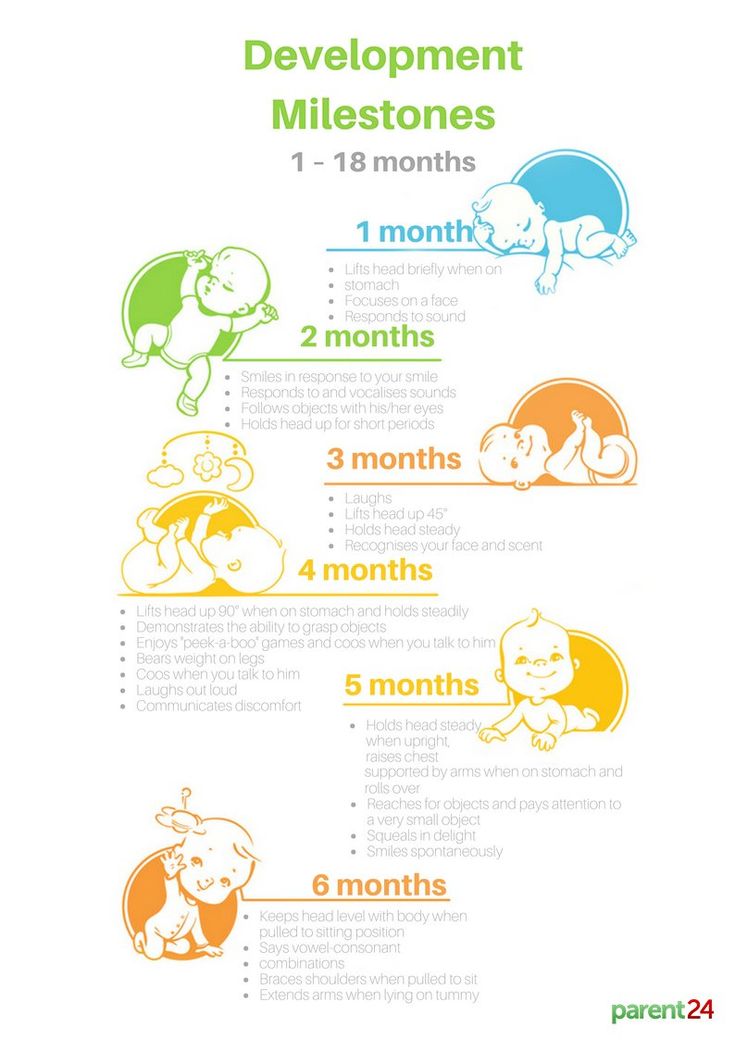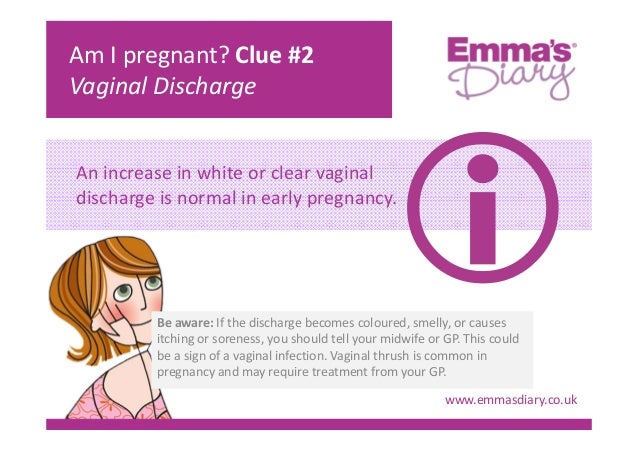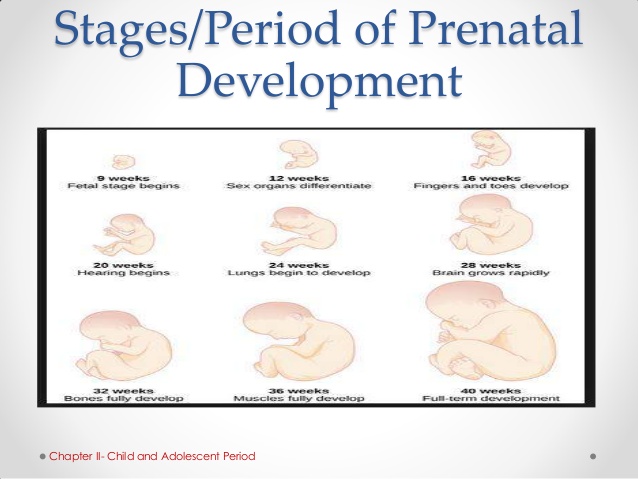12 weeks pregnant negative test
Pregnancy Test False-Negative Causes and Meaning
You have all the signs — a missed period, nausea and vomiting, sore boobs — but the pregnancy test comes back as negative. Even the blood test in your doctor’s office says you’re not pregnant.
But you know your body better than anyone else. You continue to have symptoms and insist that you may be pregnant. A few weeks later, your doctor gives you another ultrasound scan. It turns out you are pregnant!
This scenario is pretty rare, but it can definitely happen.
So why were the pregnancy tests negative? One explanation for a false negative pregnancy test is what’s called the hook effect. It’s not common but sometimes this effect leads to urine and blood tests giving the wrong result.
This error might happen even after you’ve had one positive pregnancy test and test again a couple days later. No, you’re not going crazy — and you’re not necessarily miscarrying when this happens, either.
Most people — including many health professionals — haven’t even heard of the hook effect. It’s a science term for a rare lab test glitch that causes a faulty result. The hook effect is also called a “high-dose hook effect” or “prozone effect.”
Technically, you can have a hook effect with any kind of medical lab test: blood, urine, and saliva. The hook effect will give you a false negative, when you should have a positive result.
It happens when the test is, well, too positive.
Let us explain.
This might sound counterintuitive, but it’s kind of like when you have too many options for jeans or breakfast cereal, so you can’t choose one to buy at all.
Another analogy for you: A tester who counts tennis balls by catching them can handle a few dozen tennis balls at a time. But suddenly throw hundreds of tennis balls at her, and she’ll duck for cover and not catch any at all. Then, if someone else decides how many tennis balls are on the court by counting how many the tester caught, they’ll incorrectly say none.
Similarly, too many of one kind of molecule or many different kinds of the same molecule in the body can mess up a lab test.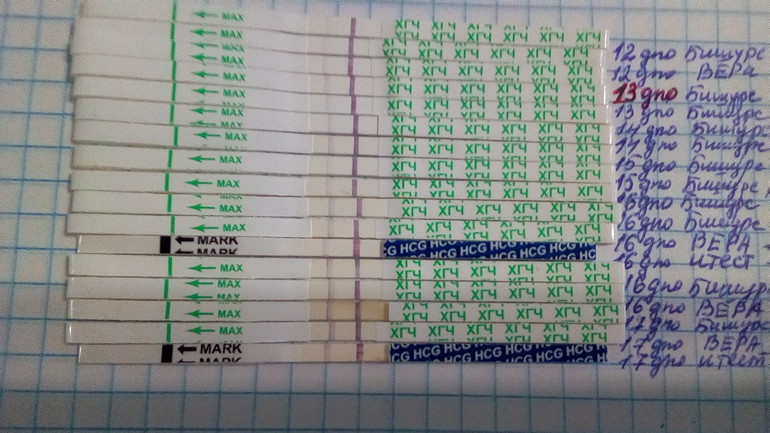 The test isn’t able to properly attach to any or enough of the right kind of molecules. This gives a false-negative reading.
The test isn’t able to properly attach to any or enough of the right kind of molecules. This gives a false-negative reading.
The hook effect incorrectly gives you a negative result on a pregnancy test. This can happen during early pregnancy or in rare cases — even into the third trimester, when it’s pretty clear you’re preggers.
During pregnancy your body makes a hormone called human chorionic gonadotrophin (hCG). You need this hormone for a healthy pregnancy. It’s first made when the fertilized egg burrows into the wall of your uterus during implantation and increases as the embryo grows.
Pregnancy tests pick up hCG in the urine or blood. This gives you a positive pregnancy test. Your blood might have some hCG as early as eight days after ovulation.
This means you could get a positive pregnancy test at the doctor’s office, or even on an at-home test in some cases, even before you’ve missed your period! Ah, science.
But hCG is also responsible for the hook effect giving you a false-negative pregnancy test. The hook effect happens when you have too much hCG in your blood or urine.
The hook effect happens when you have too much hCG in your blood or urine.
How is this possible? Well, the high levels of hCG overwhelm the pregnancy test and it doesn’t bond with them correctly or at all. Rather than two lines saying positive, you get one line that incorrectly says negative.
You wouldn’t think you could have too much hCG any more than you could be too pregnant. What does that even mean?
But if you’re pregnant with twins or triplets (or more!) you may have more hCG in your blood and urine. This is because each baby or their placenta is making this hormone to let your body know that they’re there.
The hook effect is more common when you’re carrying more than one baby. The high level of hCG hormone confuses the pregnancy tests.
Fertility drugs and other medications with hCG can also raise levels of this hormone. This might mess up your pregnancy test results.
On a very serious note, another cause of high levels of hCG is a molar pregnancy. This pregnancy complication happens in about 1 in every 1,000 pregnancies. A molar pregnancy happens when the cells of placenta grow too much. It may also cause fluid-filled cysts in the womb.
This pregnancy complication happens in about 1 in every 1,000 pregnancies. A molar pregnancy happens when the cells of placenta grow too much. It may also cause fluid-filled cysts in the womb.
In a molar pregnancy, the fetus may not form at all or there might be a miscarriage very early in the pregnancy.
A molar pregnancy is also a serious risk to the mother. See your doctor if you have any of these signs:
- a negative pregnancy test after a previous positive test
- negative pregnancy tests with symptoms of pregnancy, such as missed period, nausea, or vomiting
- severe nausea and vomiting
- pelvic pain or pressure
- bright red to dark brown vaginal bleeding after a positive pregnancy test
The hook effect isn’t just misleading. It can be harmful for both you and your baby. If you don’t know you’re pregnant, you may unintentionally do harm by taking certain medications, drinking alcohol, or using other substances.
Additionally, you may not be aware that you’re having a miscarriage if you don’t know that you’re pregnant.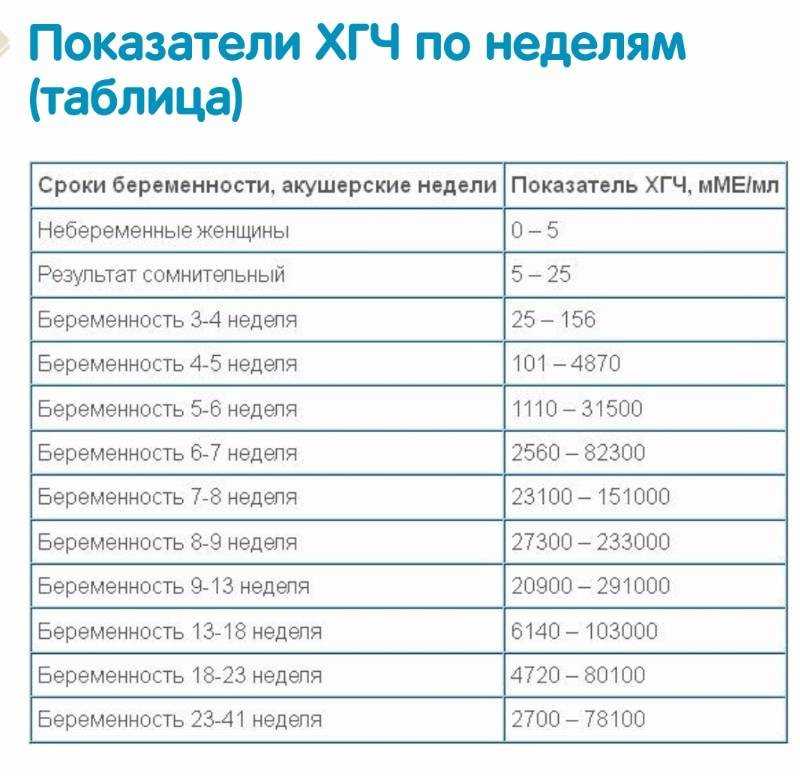 Or you may not know that you were even pregnant until you have a miscarriage. There’s no way around it — both of these scenarios can be emotionally and physically tough.
Or you may not know that you were even pregnant until you have a miscarriage. There’s no way around it — both of these scenarios can be emotionally and physically tough.
You need medical care during and after a miscarriage. A miscarriage at any time during a pregnancy can leave some remnants in the womb. This can cause infections, scarring, and even some kinds of cancers.
Remember, we’re not saying a negative test due to the hook effect necessarily means miscarriage. But if you do miscarry, a doctor can check for any leftover tissue with an ultrasound scan. You may need to have a procedure to remove the tissue.
Some doctors say you may be able to “MacGyver” a pregnancy test to avoid the hook effect.
One way to do this is to dilute your urine before using a pregnancy test. After peeing in a cup, add a few tablespoons of water to your urine so it becomes lighter in color.
This might work because it reduces how much hCG you have in your urine. You’ll still have enough of this hormone for the pregnancy test to “read,” but not so much that it’s overwhelmed.
But then again, this might not work. There’s no research proving this method.
Another way is to avoid doing a urine pregnancy test first thing in the morning. Many at-home pregnancy tests advise you to take the test after waking up because your urine is more concentrated then. This means more hCG.
Instead, try waiting until later in the day to take a pregnancy test. In the meantime, drink plenty of water as another dilution technique.
These tips may not work for everyone who gets a false-negative pregnancy test.
Getting a false-negative pregnancy test because of the hook effect is rare. False-negative test results can happen for many reasons.
One older study that tested 27 different kinds of at-home pregnancy tests found that they gave false negatives almost 48 percent of the time. That’s huge! But that also wasn’t due to the hook effect most of the time.
You might get a false-negative pregnancy test for other reasons. Some at-home pregnancy tests aren’t as sensitive to hCG as others.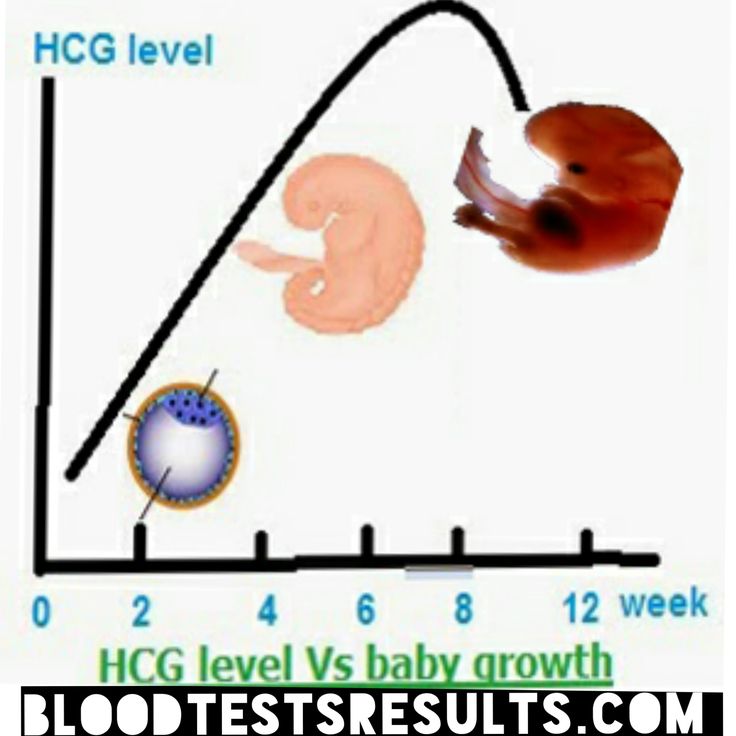 Or you may take a test too early. It takes time for the hCG hormone to appear in your urine.
Or you may take a test too early. It takes time for the hCG hormone to appear in your urine.
Talk to your doctor if you think you’re pregnant even after you get a negative pregnancy test. Make a follow-up appointment a few weeks later and ask for another test and an ultrasound scan.
If you have a molar pregnancy, you need urgent treatment and careful monitoring. Don’t ignore any symptoms or changes to your body.
You know your body best. Let the doc know that the tests might be wrong if you feel that you might be pregnant. Don’t feel ashamed or let anyone tell you it’s “all in your head.” Sometimes, your intuition is spot-on. And if it’s not this time, you have nothing to lose by double-checking.
Pregnancy Test False-Negative Causes and Meaning
You have all the signs — a missed period, nausea and vomiting, sore boobs — but the pregnancy test comes back as negative. Even the blood test in your doctor’s office says you’re not pregnant.
But you know your body better than anyone else.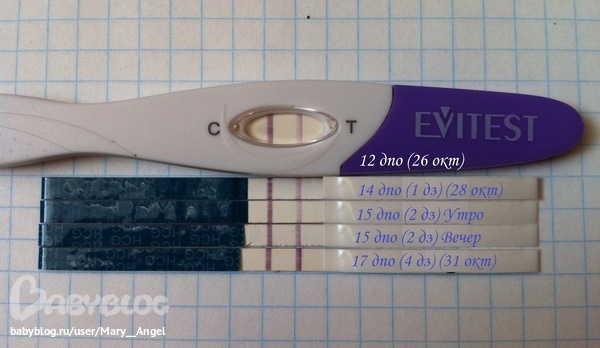 You continue to have symptoms and insist that you may be pregnant. A few weeks later, your doctor gives you another ultrasound scan. It turns out you are pregnant!
You continue to have symptoms and insist that you may be pregnant. A few weeks later, your doctor gives you another ultrasound scan. It turns out you are pregnant!
This scenario is pretty rare, but it can definitely happen.
So why were the pregnancy tests negative? One explanation for a false negative pregnancy test is what’s called the hook effect. It’s not common but sometimes this effect leads to urine and blood tests giving the wrong result.
This error might happen even after you’ve had one positive pregnancy test and test again a couple days later. No, you’re not going crazy — and you’re not necessarily miscarrying when this happens, either.
Most people — including many health professionals — haven’t even heard of the hook effect. It’s a science term for a rare lab test glitch that causes a faulty result. The hook effect is also called a “high-dose hook effect” or “prozone effect.”
Technically, you can have a hook effect with any kind of medical lab test: blood, urine, and saliva.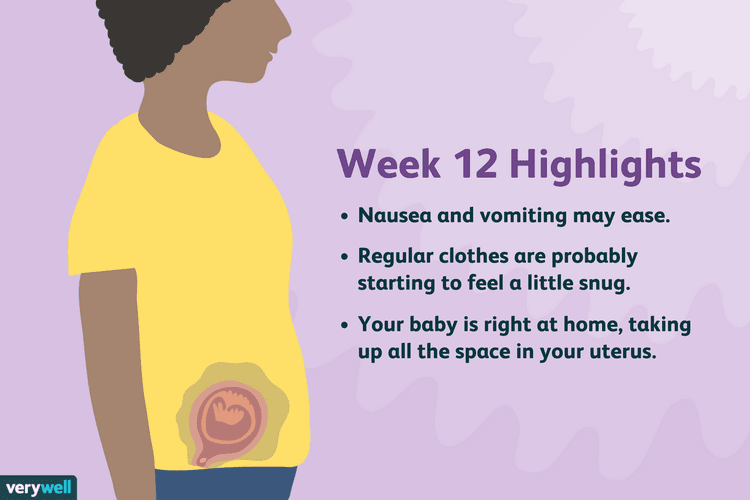 The hook effect will give you a false negative, when you should have a positive result.
The hook effect will give you a false negative, when you should have a positive result.
It happens when the test is, well, too positive.
Let us explain.
This might sound counterintuitive, but it’s kind of like when you have too many options for jeans or breakfast cereal, so you can’t choose one to buy at all.
Another analogy for you: A tester who counts tennis balls by catching them can handle a few dozen tennis balls at a time. But suddenly throw hundreds of tennis balls at her, and she’ll duck for cover and not catch any at all. Then, if someone else decides how many tennis balls are on the court by counting how many the tester caught, they’ll incorrectly say none.
Similarly, too many of one kind of molecule or many different kinds of the same molecule in the body can mess up a lab test. The test isn’t able to properly attach to any or enough of the right kind of molecules. This gives a false-negative reading.
The hook effect incorrectly gives you a negative result on a pregnancy test. This can happen during early pregnancy or in rare cases — even into the third trimester, when it’s pretty clear you’re preggers.
This can happen during early pregnancy or in rare cases — even into the third trimester, when it’s pretty clear you’re preggers.
During pregnancy your body makes a hormone called human chorionic gonadotrophin (hCG). You need this hormone for a healthy pregnancy. It’s first made when the fertilized egg burrows into the wall of your uterus during implantation and increases as the embryo grows.
Pregnancy tests pick up hCG in the urine or blood. This gives you a positive pregnancy test. Your blood might have some hCG as early as eight days after ovulation.
This means you could get a positive pregnancy test at the doctor’s office, or even on an at-home test in some cases, even before you’ve missed your period! Ah, science.
But hCG is also responsible for the hook effect giving you a false-negative pregnancy test. The hook effect happens when you have too much hCG in your blood or urine.
How is this possible? Well, the high levels of hCG overwhelm the pregnancy test and it doesn’t bond with them correctly or at all. Rather than two lines saying positive, you get one line that incorrectly says negative.
Rather than two lines saying positive, you get one line that incorrectly says negative.
You wouldn’t think you could have too much hCG any more than you could be too pregnant. What does that even mean?
But if you’re pregnant with twins or triplets (or more!) you may have more hCG in your blood and urine. This is because each baby or their placenta is making this hormone to let your body know that they’re there.
The hook effect is more common when you’re carrying more than one baby. The high level of hCG hormone confuses the pregnancy tests.
Fertility drugs and other medications with hCG can also raise levels of this hormone. This might mess up your pregnancy test results.
On a very serious note, another cause of high levels of hCG is a molar pregnancy. This pregnancy complication happens in about 1 in every 1,000 pregnancies. A molar pregnancy happens when the cells of placenta grow too much. It may also cause fluid-filled cysts in the womb.
In a molar pregnancy, the fetus may not form at all or there might be a miscarriage very early in the pregnancy.
A molar pregnancy is also a serious risk to the mother. See your doctor if you have any of these signs:
- a negative pregnancy test after a previous positive test
- negative pregnancy tests with symptoms of pregnancy, such as missed period, nausea, or vomiting
- severe nausea and vomiting
- pelvic pain or pressure
- bright red to dark brown vaginal bleeding after a positive pregnancy test
The hook effect isn’t just misleading. It can be harmful for both you and your baby. If you don’t know you’re pregnant, you may unintentionally do harm by taking certain medications, drinking alcohol, or using other substances.
Additionally, you may not be aware that you’re having a miscarriage if you don’t know that you’re pregnant. Or you may not know that you were even pregnant until you have a miscarriage. There’s no way around it — both of these scenarios can be emotionally and physically tough.
You need medical care during and after a miscarriage. A miscarriage at any time during a pregnancy can leave some remnants in the womb. This can cause infections, scarring, and even some kinds of cancers.
A miscarriage at any time during a pregnancy can leave some remnants in the womb. This can cause infections, scarring, and even some kinds of cancers.
Remember, we’re not saying a negative test due to the hook effect necessarily means miscarriage. But if you do miscarry, a doctor can check for any leftover tissue with an ultrasound scan. You may need to have a procedure to remove the tissue.
Some doctors say you may be able to “MacGyver” a pregnancy test to avoid the hook effect.
One way to do this is to dilute your urine before using a pregnancy test. After peeing in a cup, add a few tablespoons of water to your urine so it becomes lighter in color.
This might work because it reduces how much hCG you have in your urine. You’ll still have enough of this hormone for the pregnancy test to “read,” but not so much that it’s overwhelmed.
But then again, this might not work. There’s no research proving this method.
Another way is to avoid doing a urine pregnancy test first thing in the morning. Many at-home pregnancy tests advise you to take the test after waking up because your urine is more concentrated then. This means more hCG.
Many at-home pregnancy tests advise you to take the test after waking up because your urine is more concentrated then. This means more hCG.
Instead, try waiting until later in the day to take a pregnancy test. In the meantime, drink plenty of water as another dilution technique.
These tips may not work for everyone who gets a false-negative pregnancy test.
Getting a false-negative pregnancy test because of the hook effect is rare. False-negative test results can happen for many reasons.
One older study that tested 27 different kinds of at-home pregnancy tests found that they gave false negatives almost 48 percent of the time. That’s huge! But that also wasn’t due to the hook effect most of the time.
You might get a false-negative pregnancy test for other reasons. Some at-home pregnancy tests aren’t as sensitive to hCG as others. Or you may take a test too early. It takes time for the hCG hormone to appear in your urine.
Talk to your doctor if you think you’re pregnant even after you get a negative pregnancy test. Make a follow-up appointment a few weeks later and ask for another test and an ultrasound scan.
Make a follow-up appointment a few weeks later and ask for another test and an ultrasound scan.
If you have a molar pregnancy, you need urgent treatment and careful monitoring. Don’t ignore any symptoms or changes to your body.
You know your body best. Let the doc know that the tests might be wrong if you feel that you might be pregnant. Don’t feel ashamed or let anyone tell you it’s “all in your head.” Sometimes, your intuition is spot-on. And if it’s not this time, you have nothing to lose by double-checking.
When an express pregnancy test is wrong, a gynecologist from the Mechnikov University explained
- Health
About a quarter of women are not sure about the correctness of pregnancy test results. But how often do rapid tests actually fail? This "Doctor Peter" learned from the gynecologist of the Research Institute of Medical Mycology. Kashkin SZMGU them. Mechnikov Yulia Dolgo-Saburova.
Mechnikov Yulia Dolgo-Saburova.
August 11 2021181
- Source:
- Getty Images
All rapid tests, regardless of price and method of work, are based on the same principle - they determine the presence of human chorionic gonadotropin (hCG) in the urine. This is a hormone that begins to be produced in the female body 7-10 days after the fertilized egg begins to develop. It is believed that when pregnancy occurs, hCG can be determined already in the first days of the delay in the menstrual cycle.
There are special substances in the tests that capture the hormone and react to it by changing the color on the strip or the inscription on the screen of the electronic device: pregnon or non pregnon (“pregnant” or “not pregnant”).
Why a negative answer can be false
If the concentration of gonadotropin is insufficient, the test result may turn out to be a false negative. This can happen when conception occurred shortly before the onset of menstruation, and hCG has not yet had time to accumulate in a perceptible amount. By the way, with a period of more than 12 weeks, an express test will also be useless: hCG ceases to be produced.
By the way, with a period of more than 12 weeks, an express test will also be useless: hCG ceases to be produced.
False-negative test may occur with ectopic pregnancy and threatened miscarriage. With excessive fluid intake, the concentration of hCG in the urine may also decrease, which means that the result of the analysis may be unreliable. Therefore, before the test, experts advise not to drink a lot of fluids and not to use diuretics. This is especially important in the short term, when a woman does a test in the first days after a delay. And it is best to determine the level of the hormone in the morning.
“Some tests say that the time of day at which it is carried out does not matter,” says Yulia Dolgo-Saburova. — As a rule, such tests are positioned as highly sensitive. But no matter what the instructions say, a few days after the delay, I would still recommend doing the test in the morning, since a noticeable amount of hCG appears in the urine throughout the day around the third week of embryo development.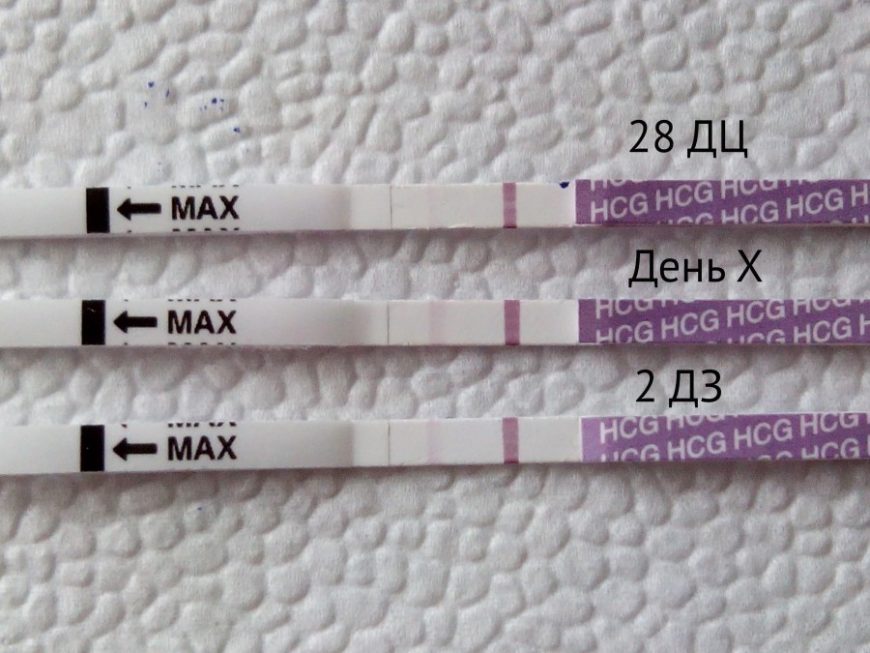
Why a positive answer can be false
In addition to false negative results, rapid pregnancy tests can also show false positives. This happens when taking drugs containing hCG, for example, ovulation-stimulating Pregnil and Profazi. At the end of treatment with these drugs, high hCG levels can persist for up to two weeks. Therefore, the test will have to wait for this period. After miscarriages, abortions, removal of an ectopic pregnancy, the hormone does not leave immediately - it still remains in the body for some time, and tests may give false positive answers.
The test can also show pregnancy where it is not present in various tumor processes.
Read also
How to avoid error
In addition, false results, both positive and negative, rapid tests may show for "technical" reasons.
The test may be of poor quality or expired. Therefore, it is always necessary to check the expiration date, the tightness of the packaging and do not hesitate to ask for a certificate. You can only use a well-packed device and print it out before direct use. Violation of storage conditions can also be misleading. In order not to doubt the correct storage of tests, it is better to buy them at a pharmacy.
You can only use a well-packed device and print it out before direct use. Violation of storage conditions can also be misleading. In order not to doubt the correct storage of tests, it is better to buy them at a pharmacy.
Failure to follow the test instructions and use of stale urine can also change the result. But much more often it happens that one day the test is positive, and after a while it becomes negative. But this is not a mistake. This happens when the pregnancy freezes for a very short period, and a miscarriage occurs. Usually a woman does not even notice it: everything happens like a normal menstruation, only with a slight delay.
Three types of tests - three degrees of accuracy
There are three groups of rapid tests: strips, flatbeds and inkjet. The most popular ones are test strips . The principle of operation is simple: you need to lower the test strip into a small amount of urine and after 5-10 minutes the answer will be known. If the second strip is colored - the test is positive, if not colored - negative. It happens that the second strip has changed color barely noticeably, such a result is considered weakly positive. And gynecologists advise to repeat the test in three days. Test strips are the cheapest, but also less "truthful" compared to the rest. The inaccuracy of the results is due to the fact that the strip can be underexposed or overexposed.
If the second strip is colored - the test is positive, if not colored - negative. It happens that the second strip has changed color barely noticeably, such a result is considered weakly positive. And gynecologists advise to repeat the test in three days. Test strips are the cheapest, but also less "truthful" compared to the rest. The inaccuracy of the results is due to the fact that the strip can be underexposed or overexposed.
Tablet tests are slightly more expensive, but the quality of their results is considered to be higher. The test consists of two windows: in the first you need to drop a few drops of urine with a pipette, and in the second, after a while, the answer will appear.
For inkjet tests, you do not need to collect urine separately - just place the device under the urine stream, as indicated in the instructions. After a few minutes, the result will appear on the display. Inkjet tests are considered the most expensive, but also the most sensitive - they can be used to determine pregnancy even a few days before the start of the expected menstruation.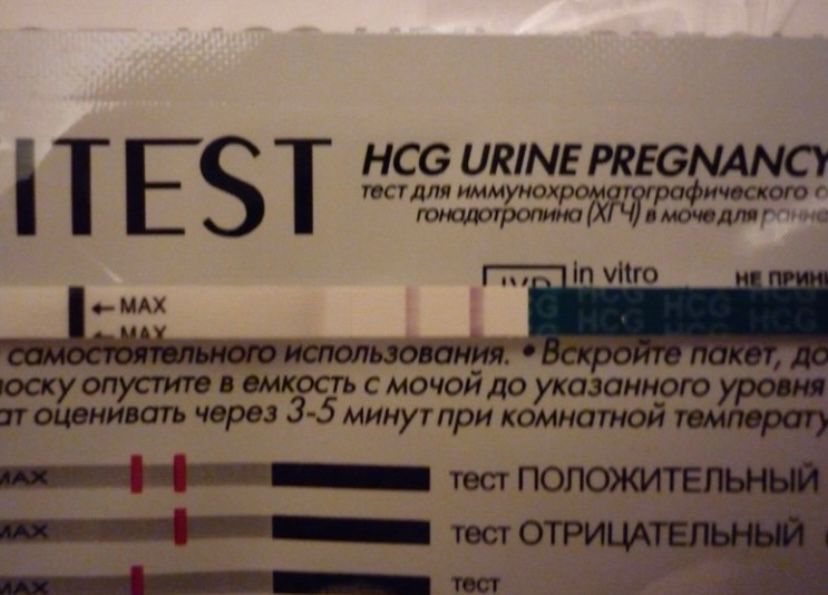
Read also
No matter how much you test, you have to go for an ultrasound scan
– If the pregnancy test was carried out in accordance with all the rules and there are no internal reasons in the body that could affect its reliability, it does not matter what type of tests a woman uses it: in 99% of cases he can be trusted, says gynecologist Yulia Dolgo-Saburova. - In my many years of practice, there were only two or three cases when the tests were wrong.
However, the only irrefutable proof of pregnancy is considered to be only an ultrasound, which shows the fetal egg. And you can see it no earlier than a week after the delay.
If the pregnancy test is negative on the first or second day of delay, the specialist advises to repeat it after 3 days. If it is positive, this is a definite reason to contact a gynecologist. If the test remains negative, it should be carried out in another three days. And if it turns out to be negative for the third time, and menstruation does not begin, you need to see a doctor as soon as possible.
Text author: Elena Rtishcheva
Reading today
Psychologist Labkovsky named a common mistake that causes everything in life to go wrong
Test: choose what kind of coffee you drink and find out everything about your personality
The disease of missed opportunities. How Russia fights cervical cancer and other types of “female” cancer
Psychologist Labkovsky named 6 qualities that only ideal women have
Question to a psychologist: “My lover is like my son, is that normal?”
How pregnancy tests work: how long after sex it will show the result, why it can be false negative or false positive, why the second line can be dim, will it show when taking hormones - July 13, 2022
1
How do tests give a result?
- During pregnancy, human chorionic gonadotropin appears in the blood and urine, hereinafter - hCG (hormone produced by the outer shell of the embryo. - Note ed. ), - the doctor explains to 59. RU. - Normally, it is determined in the blood and urine of a woman only when pregnancy occurs. It reacts with a chemical reagent that is impregnated with a test strip.
RU. - Normally, it is determined in the blood and urine of a woman only when pregnancy occurs. It reacts with a chemical reagent that is impregnated with a test strip.
Share
2
Determination of pregnancy from the first day of delay. Truth or marketing?
“If the tests are good and they contain a chemical that hCG sees, then pregnancy can really be determined from the first day of the delay,” says Natalia Karmatskikh. - And when donating blood for hCG, pregnancy is determined even five to seven days before the delay.
Share
3
Is latency the starting point for the test?
The doctor explains: if unprotected sex was the day before the expected start of menstruation, the test will not show the result.
- If there was an unprotected contact, then the test, if the pregnancy has come, will show a positive result in two weeks, - explains Natalia. - This is if everything is successful - the cycle is good, they got there on time, the man has no problems and the right amount of spermatozoa. Maybe this: unprotected intercourse, but the partner used some kind of creams, from which the spermatozoa died.
Maybe this: unprotected intercourse, but the partner used some kind of creams, from which the spermatozoa died.
Share
4
“It's better to do the test in the morning” - truth or myth?
It is considered that the test is best done in the morning, at the first urination, when the urine is concentrated. The doctor explains: this is not a delusion. The fact is that in the morning there is a cumulative concentration of hCG in the urine. The test can show a reliable result even during the day if the woman's kidneys work well, but the gynecologist still advises to follow the rules.
- It's better to do the test in the morning anyway, because in the afternoon it can be weakly positive, not appear, the girl will doubt and be nervous. In order for the result to be reliable for sure and in order not to waste a lot of nerves, it is better to do a test at the first urination, Natalia Karmatskikh clarifies.
Note that there is no recommendation not to eat or drink before testing.
Share
5
Test instructions indicate 99% accuracy. Is it so?
- It depends on which company. But 99% even the best manufacturer can not give. It happens that a woman is already six weeks pregnant, and the test shows nothing, the doctor notes. - Even if contraceptives give 95-98% reliability, then it is unlikely that the test gives 99%. It would be more correct to say: the accuracy tends to 99%.
Share
6
Why do tests get false negatives?
According to Natalia Karmatsky, this happens if the test itself is defective (due to improper storage and other things) or if there is a small dose of hCG in the urine.
Share
7
Why can the result be false positive?
- This can happen due to diseases of the ovaries and uterus - tumors, tumor-like diseases or ectopic pregnancy. And if the result is positive, but false, you need to do a smear, conduct an examination on a chair with mirrors, with your hand, be sure to do an ultrasound to see what's in the appendages, Natalya Karmatskikh recommends.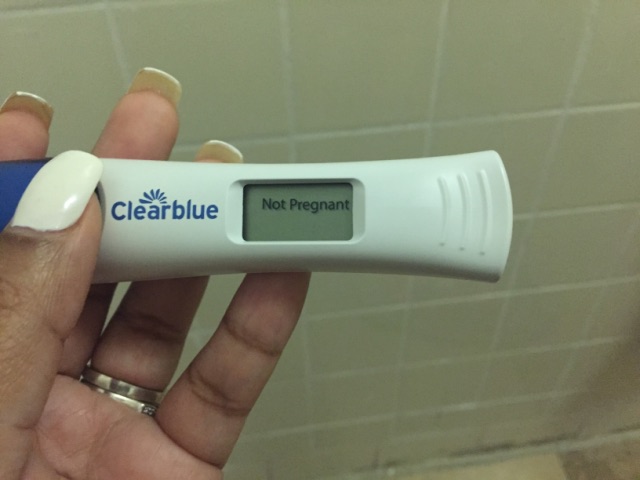
After a complex of examinations, the doctor advises to monitor hCG in dynamics according to blood tests - tests will no longer be needed. If doctors suspect something, they will look at tumor markers.
In addition to diseases, menopause can also be a cause.
Share
8
How do hormonal contraceptives affect test results?
When taking hormonal contraceptives, the test result can be both false positive and false negative. According to the doctor, this is due to the improper use of such a remedy. With proper use, this situation can not be.
Share
9
What happens if the test strip is overexposed / underexposed in urine?
When using a pregnancy test, the doctor advises you to follow the rules, because there are nuances.
- This may not affect the result if the hCG concentration is good. And if there is little hormone there or there is a frozen pregnancy, then it will be difficult to determine it in the short term, the gynecologist explains.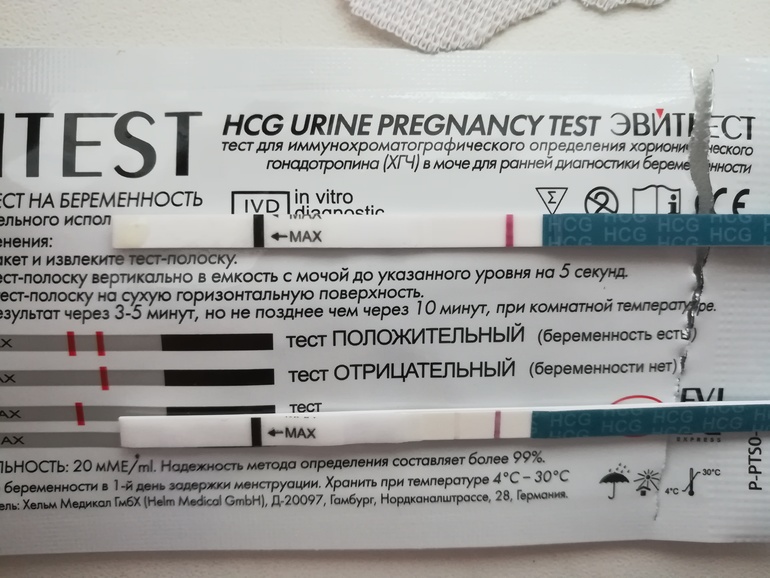 “So it’s best to do things the right way.
“So it’s best to do things the right way.
Share
10
I took the test and forgot about it. Is the result distorted?
If you left the test for several days, there is pregnancy, and there are no health problems, then the second strip will not go anywhere, except that it may become a little paler.
Share
11
There are two lines on the test, but one is pale. What does it mean?
- This can speak not only about pregnancy, but also about tumor-like diseases of the uterus or even the intestines. There may be an ectopic pregnancy or a frozen fetus, the doctor warns.
Share
12
Test prices vary. Are they any different?
The doctor explains: there is no fundamental difference in the tests, the main thing is to store them correctly. More expensive are those that reflect the result in weeks, plastic ones, but in this case the period may be calculated incorrectly. If we talk about test strips, then their price depends on the promotion of manufacturers.

